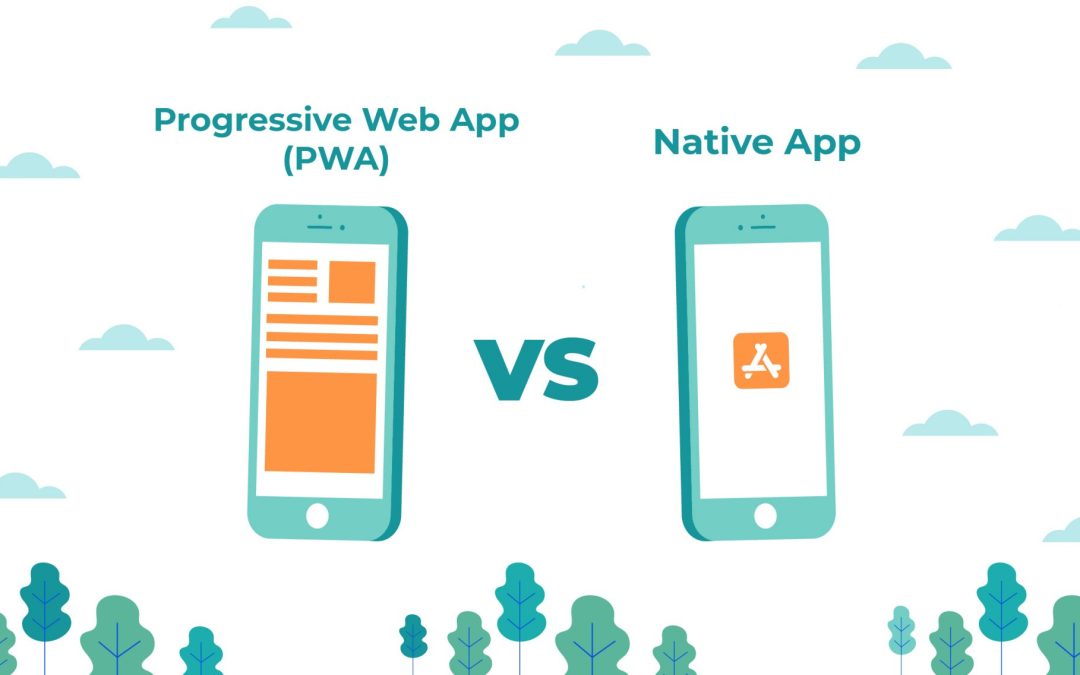PWA vs. Native apps, To match modern customers’ expectations, e-commerce businesses must offer a quick, simple, and flawless mobile purchasing experience. This is where mobile apps and progressive web apps (PWAs) come into play.
But which is better: a progressive web app or a native app? To make a valid conclusion, you must first understand the advantages and disadvantages of each strategy. To make things easier, we’ve created this guide that explains the distinctions between PWAs and native applications, and how businesses may prosper from the other.
Let’s begin!
Before moving toward the differences between PWA vs. Native apps, let us introduce you to these applications.
PWA (Progressive Web App):
Progressive web apps are web apps that use service employees, web app manifests (JSON files), and other web framework functions with deep integration to provide users with a native-like interface.
They are built with the latest JavaScript frameworks to provide a near-native interface and may be deployed on a mobile phone immediately. PWAs take up far fewer data storage on consumers’ devices than native apps. PWAs even allow users to store the app on their device’s home screen without installing the app.
Because of Google’s mobile-first indexing technique, progressive web apps have a single codebase and help a business rank better on search engines. Furthermore, users appreciate the fact that PWAs do not require installation. As a result, it’s a win situation for both businesses and their customers.
PWAs have been used by brands for quite some time. Starbucks, Ali Express, Twitter, and Forbes are among the most well-known. And that’s not the end of it, there are dozens of outstanding PWA app examples across the world.
Native App
Native applications are software programs that are designed to run on selected devices or platforms. Since Native applications are designed for certain devices and operating systems, they can take advantage of the device’s native hardware and software.
Native apps’ functionalities are fully optimized for their operating system, allowing them to make use of the system’s structure and features. This is also why native apps for multiple operating systems and devices are structured differently.
A native Android app, for example, can be written in Java, while an iOS app can be written in Objective C. Both apps generated can later be made available free on the App Store and Google Play for iOS and Android.
Now you must be waiting for the differences between them. Here you go!
What Are the Primary Distinctions Between a PWA and a Native App?
A progressive web app employs web app technologies such as CSS, JavaScript, and HTML. Progressive web apps provide a similar user experience to native apps.
The primary distinction is that, unlike web apps, PWAs may take advantage of device features such as push notifications.
Which One Should You Use: PWAs or Native Apps?
Both PWA and Native have differences, such as strengths, perks, and limitations.
As a result, when deciding between the two, it is best to consider each and every aspects in which both technologies excel.
Here are some examples of when you should use one of the two applications,
PWA vs. the Native:
PWA Is Ideal If:
You choose to create a simple app for your consumers that doesn’t require an installation and allows them to engage with the app via push notifications.
You’re on a tight budget and behind schedule. PWAs are substantially less expensive than Native and take far less time to construct.
PWA is akin to a website in that it allows businesses to grow and expand; therefore, if enhancing SEO is your goal, PWA is the way to go.
Native Is Ideal If:
You want to establish a business by launching an end-to-end mobile phone app for your users that includes extra security features and can be installed from stores.
Since your product necessitates powerful computational skills, you want to take advantage of modern key specifications such as geofencing and sensor detection.
Conclusion
Making a mobile app development decision for your startup or business shouldn’t be rushed. You must weigh all the pros and cons before you move on to the development of a native app or a progressive web app.
If your users are data-conscious and value their time, you should go with a progressive web app as it requires no downloads. But if you have complex functionality and want to be on the app store for brand credibility, you should think of going forward with a native app.
